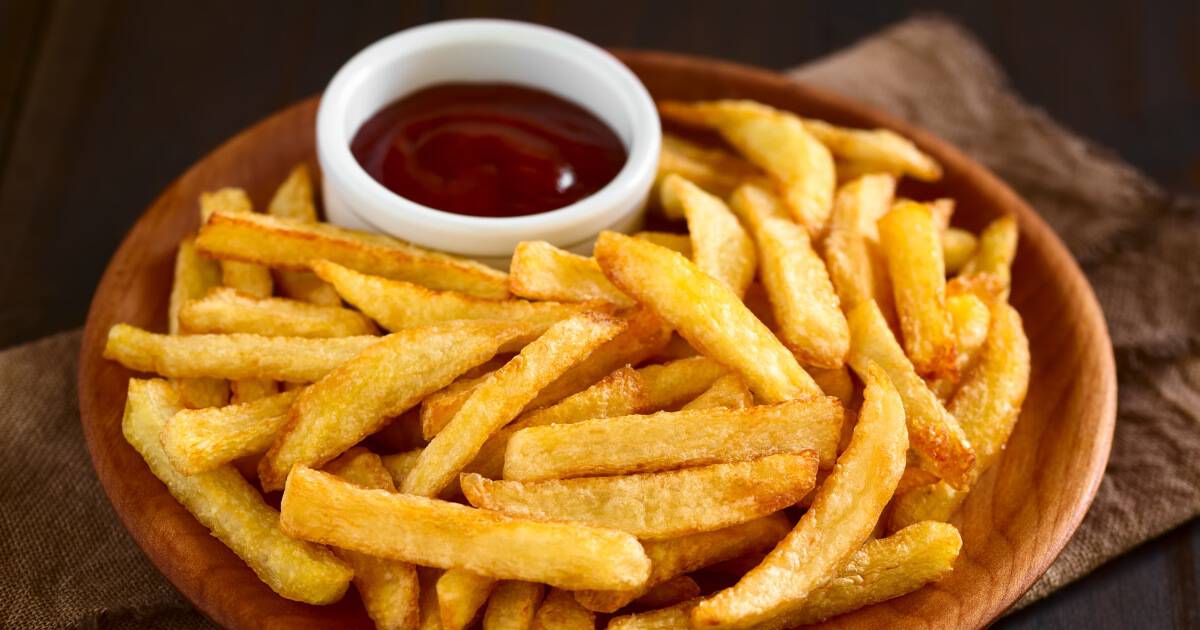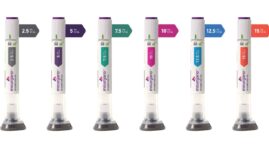Mounjaro is quickly growing in popularity as an effective medication to help manage blood sugar levels in people with type 2 diabetes.
However, some of the side effects of the medication can be worsened by the foods we eat.
This article will explain what types of food are best to avoid when taking Mounjaro and what to eat to help lessen side effects and feel your best.

Table of Contents
- What is Mounjaro?
- What are the side effects of Mounjaro?
- What foods should I avoid while taking Mounjaro?
- What foods should I eat while taking Mounjaro?
- Foods to help with nausea and upset stomach
- Do you have to take Mounjaro with food?
- Why is Mounjaro making me sick to my stomach and causing diarrhea?
- Can Mounjaro replace insulin?
- Final thoughts
What is Mounjaro?
Mounjaro is the first medicine in a drug class known as GIP/GLP-1 receptor agonists. It is FDA-approved to improve blood sugar control in people with type 2 diabetes along with a healthy diet and exercise.
Want to learn more? Read: Everything You Need to Know About Mounjaro.
What are the side effects of Mounjaro?
Mounjaro is a very effective medicine for type 2 diabetes management, but it’s essential to be aware of its potential side effects. Common issues experienced by users include nausea, vomiting, diarrhea, bloating, gas, and stomach pain.
While these effects are often mild to moderate, Mounjaro can also cause more severe problems such as thyroid tumors, pancreatitis, gallbladder disease, and serious allergic reactions. Understanding these side effects is crucial for anyone considering or currently taking the medicine.
Learn about potential side effects in: Mounjaro Side Effects.
What foods should I avoid while taking Mounjaro?
Mounjaro is intended to be used along with a healthy diet and increased physical activity.
There are no foods that are strictly off-limits for people who take Mounjaro.
However, some foods may exacerbate negative side effects, including nausea, diarrhea, or vomiting.
Other foods are fattening and cause increased insulin resistance, which can make the medication not as effective.
One of the benefits of Mounjaro is that it promotes healthy blood sugar levels when it’s combined with a balanced diet and physical activity.
Avoiding or limiting certain foods may be helpful to both prevent adverse side effects and boost the efficacy of the medication.
It’s always a good idea to talk with your doctor before making dietary changes.
With that said, consider avoiding the following foods:
Foods and beverages with added sugar
Eating and drinking foods and beverages with added sugar isn’t great for anyone, let alone people with diabetes trying to manage their blood sugar levels.
These processed foods and drinks can complicate diabetes management, increase insulin resistance, and potentially reduce Mounjaro’s effectiveness.
Added sugars found in foods such as ice cream, candy, desserts, and soda also make losing weight harder.
Overly fatty, fried, or greasy foods
High-fat foods, like fried, fatty, and greasy fast food, are full of unhealthy saturated and trans fats.
These foods are associated with the development of heart disease, chronic inflammation, high blood pressure, and insulin resistance.
Additionally, these types of foods also can cause bloating, gas, and nausea.
Many people who take Mounjaro will be sensitive to high-fat meals — especially when they first begin to take the medication.
Too much alcohol
Both Mounjaro and alcohol increase the risk of low blood sugar, especially if you’re on insulin.
This can be dangerous if you are a person living with diabetes — especially if you have hypoglycemia unawareness (no early symptoms of low blood sugar).
People with a history of alcohol abuse or alcoholism may also be counseled to be cautious when taking Mounjaro, as pancreatic inflammation may occur.
Talk with your doctor if you’re dealing with alcohol addiction or if you experience any side effects while taking Mounjaro and drinking alcohol.
Be extra aware of your blood sugars, checking your levels frequently, if you take Mounjaro and drink alcohol regularly.
Refined carbohydrates
These items are stripped of their beneficial fiber and other important nutrients. They also tend to be digested quickly, causing rapid rises in blood sugar levels, and they can contribute to weight gain and inflammation.
Foods in this category include white bread, white rice, pastries, bagels, and many breakfast cereals.
Ultra-processed foods
These foods tend to have many ingredients and typically contain high levels of sugar, sodium, and unhealthy fats and low levels of beneficial nutrients. Items in this category include packaged snacks, processed meat, flavored potato chips, soda, and candy.
What foods should I eat while taking Mounjaro?
Just as there are foods that are best avoided when taking this medicine, there are plenty of foods that can make Mounjaro more effective and make your diabetes management easier.
You should stick with mostly unprocessed, whole foods that have no added sugar.
Enjoy the following foods in abundance:
Lean protein
Lean proteins found in foods such as chicken, fish, turkey, tofu, tempeh, beans and legumes, low-fat dairy, and eggs are a great way to build a meal and feel full without extra sugar or carbohydrates.
It’s best to steam or grill protein sources instead of frying them.
(A high protein intake may not be recommended for people with kidney disease.)
Healthy fats
Unlike saturated or trans fats, healthy fats — such as monounsaturated and polyunsaturated fats — have been shown to have a beneficial effect on cholesterol levels. This can lower the risk of heart disease.
Healthy fats are also essential for the absorption and transport of vitamins. This includes vitamins such as A, D, E, and K, which are fat-soluble and require some level of dietary fat to be absorbed in the body.
Eggs, fish, nuts, avocados, olives, extra-virgin olive oil, and peanut butter are all great sources of healthy fats.
Nuts and seeds
These low-carb foods are a good source of protein and healthy fats, along with fiber, vitamins, and minerals. Good choices include walnuts, almonds, cashews, macadamias, pistachios, pecans, flaxseeds, chia seeds, pumpkin seeds, and sunflower seeds.
(These items are calorie-dense, so it’s important to be mindful of portion sizes. A standard serving of nuts and seeds is typically 1 ounce.)
Low-glycemic vegetables and fruits
Low-carb and cruciferous vegetables such as broccoli, cauliflower, spinach, kale, Brussels sprouts, bell peppers, tomatoes, cucumbers, onions, and cabbage are great additions to your diet. So are low-glycemic fruits such as berries, citrus fruits, apples, and pears.
Low-glycemic vegetables and fruits are less likely to spike blood sugar levels quickly, are full of fiber, vitamins, and essential minerals, and help to improve insulin sensitivity.
Vegetables and fruits in general can increase bloating and gas due to their high amounts of fiber, so if you’re not used to eating a lot of vegetables (especially raw vegetables), start with a smaller portion and work your way up.
Whole grains
In contrast to refined grains, whole grains are high in fiber, which can help you feel full for longer. They also provide vitamins, minerals, and a variety of other nutrients. Examples include whole wheat, brown rice, hulled barley, and quinoa.
Beans and legumes
These foods are high in fiber, low in fat, and a good source of plant-based protein and a variety of vitamins and minerals. Choices include lentils, white beans, black beans, chickpeas, peas, kidney beans, and navy beans.
As with vegetables, beans and legumes can increase bloating and gas due to their high amounts of fiber, so if you’re not used to eating them, start with a smaller portion.
Fermented foods
Fermentation occurs when good bacteria, or probiotics, break down the sugars in a food. Fermented foods can help restore the balance of good to bad bacteria in your gut. Options include pickles, sauerkraut, yogurt, kimchi, and kefir.
Water
Hydration is important for general health and weight loss. Drinking water before eating can help you feel fuller, reducing your overall calorie intake.
Foods to help with nausea and upset stomach
You may be especially susceptible to nausea and an upset stomach in the first few weeks that you’re taking Mounjaro.
The following foods can help alleviate these symptoms until your body gets used to the medication:
- Clear-broth soups
- Bananas
- Toast
- Rice
- Crackers
- Jell-O
However, these types of food may spike blood sugar levels, so after your nausea and upset stomach have gone away, it’s best to return to a diet of unprocessed, whole foods for the long term.
Do you have to take Mounjaro with food?
No. Unlike bolus (mealtime) insulin, you do not need to take Mounjaro with food.
It can be taken any time of day, but the important thing to remember is to take it at the same time, on the same day, each week.
If taking Mounjaro immediately makes you nauseous, you may want to eat a little something beforehand, such as some bread or crackers.
Read more: Mounjaro Dosing Guide: How Much Should You Take?
Why is Mounjaro making me sick to my stomach and causing diarrhea?
Some people experience nausea, vomiting, and diarrhea when first starting Mounjaro, because of how it changes appetite and digestion.
Call your doctor if you are experiencing severe side effects for several weeks without improvement.
It could be a sign of something more serious if you have uncontrollable vomiting or diarrhea, serious low blood sugar levels, severe nausea, or severe stomach pain.
Can Mounjaro replace insulin?
No. If you are insulin-dependent, Mounjaro does not take the place of your required insulin.
Over time, Mounjaro can increase insulin sensitivity, decreasing your overall need for insulin and lowering the total amount of insulin you need per day.
However, if you are prescribed insulin for your diabetes management, Mounjaro should be used in conjunction with insulin, not as a replacement.
Talk with your doctor about adjusting your insulin doses if you are experiencing chronic low blood sugar levels while taking Mounjaro.
Do not stop taking insulin without talking with your doctor first.
Learn more about the Mounjaro’s dosing in: Mounjaro Dosing Guide: How Much Should You Take?
Final thoughts
While Mounjaro has shown impressive results in managing blood sugar levels and helping with weight loss, its effectiveness can be significantly influenced by the foods you eat.
To minimize side effects and maximize benefits, it’s essential to avoid high-sugar, high-fat, and overly processed foods and excess alcohol consumption, which can worsen side effects and decrease the medication’s effectiveness.
Instead, embracing a diet rich in lean proteins, healthy fats, nuts and seeds, low-glycemic vegetables and fruits, whole grains, beans and legumes, fermented foods, and sufficient water can enhance Mounjaro’s positive impact on diabetes management.
Remember, each person’s response to medication and dietary changes can vary, so it’s crucial to maintain open communication with your healthcare provider to tailor a plan that suits your specific needs and health goals.
Suggested next article: Everything You Need to Know About Mounjaro.




